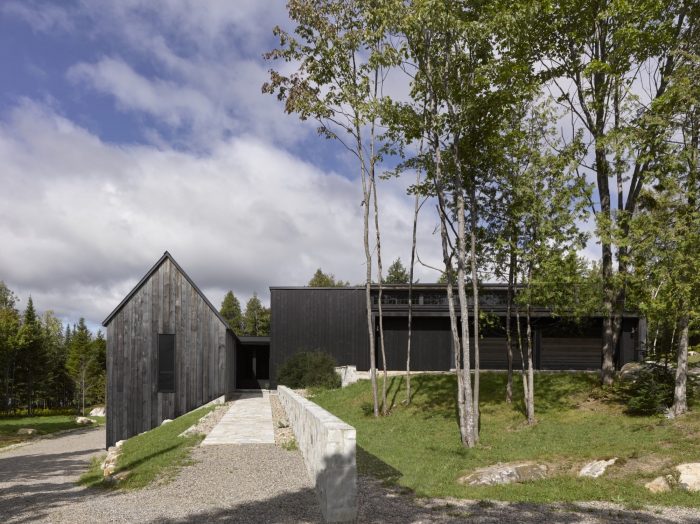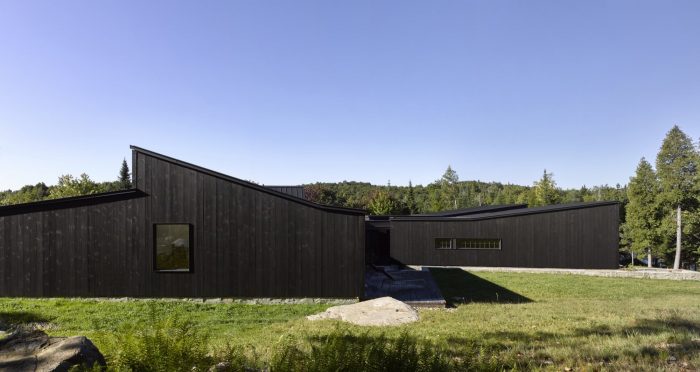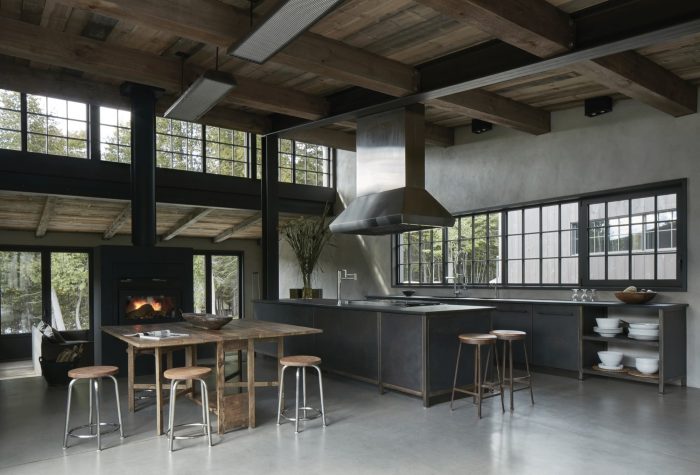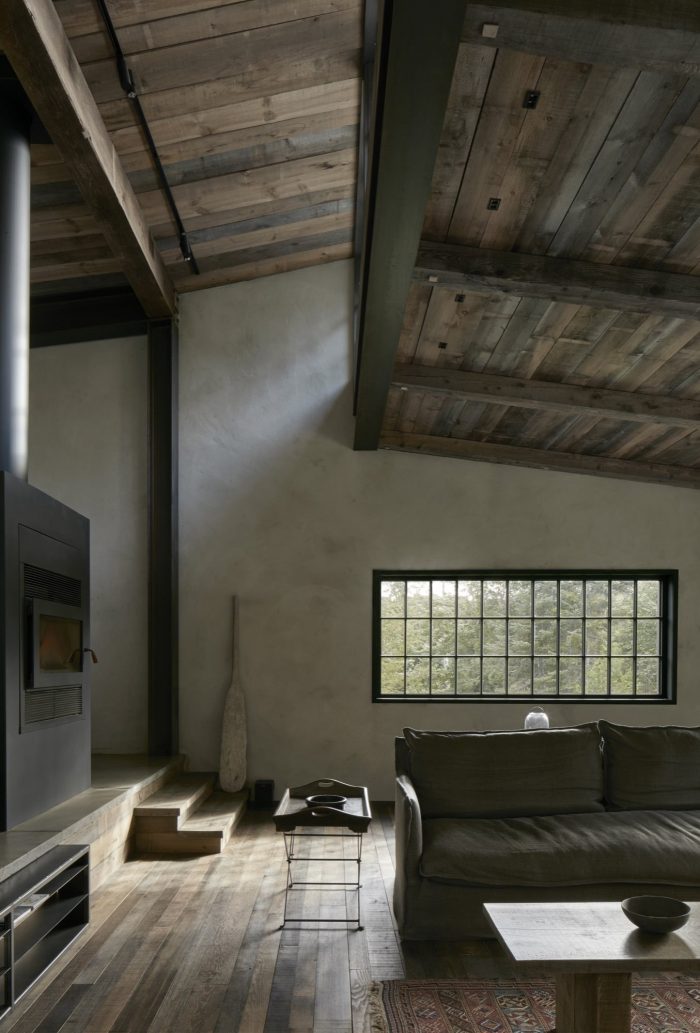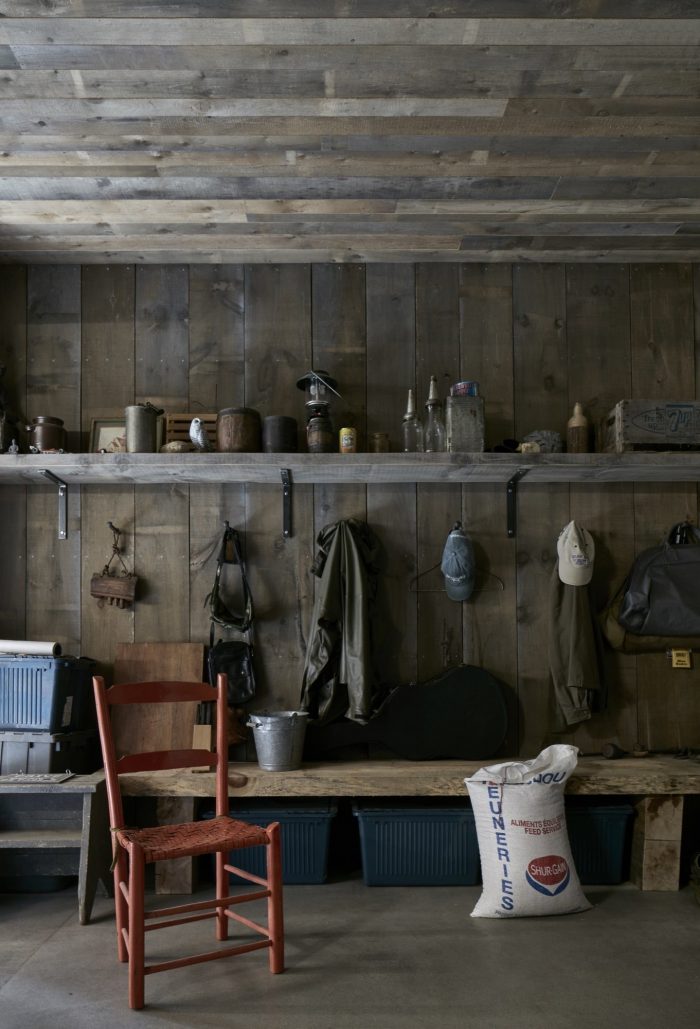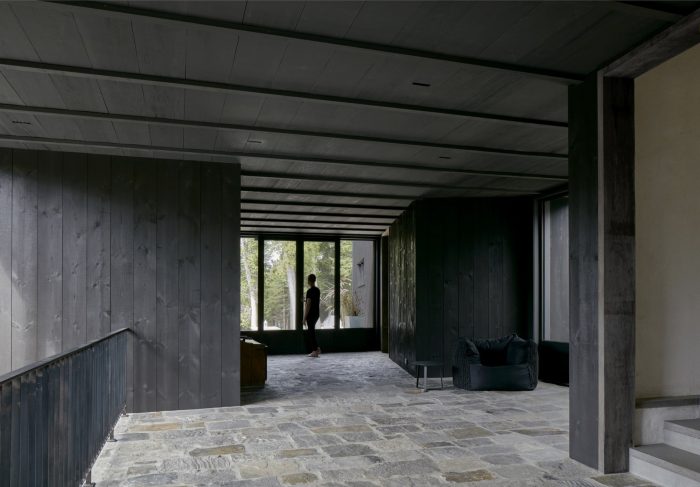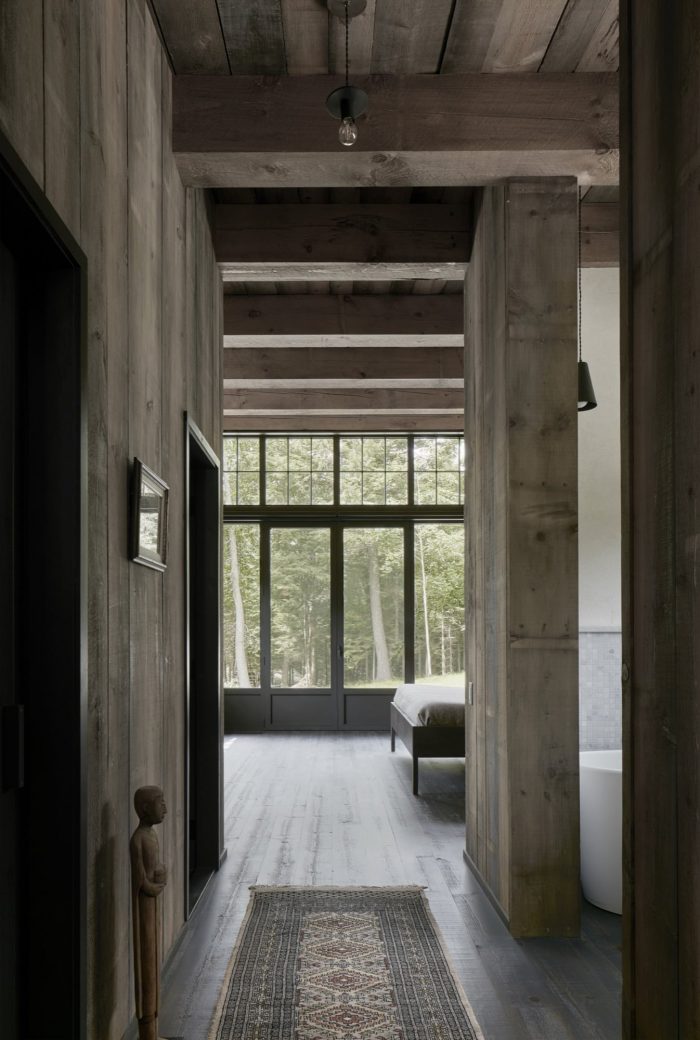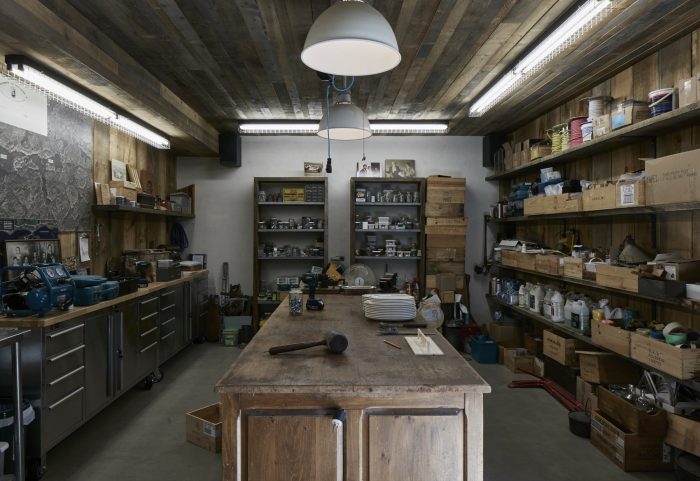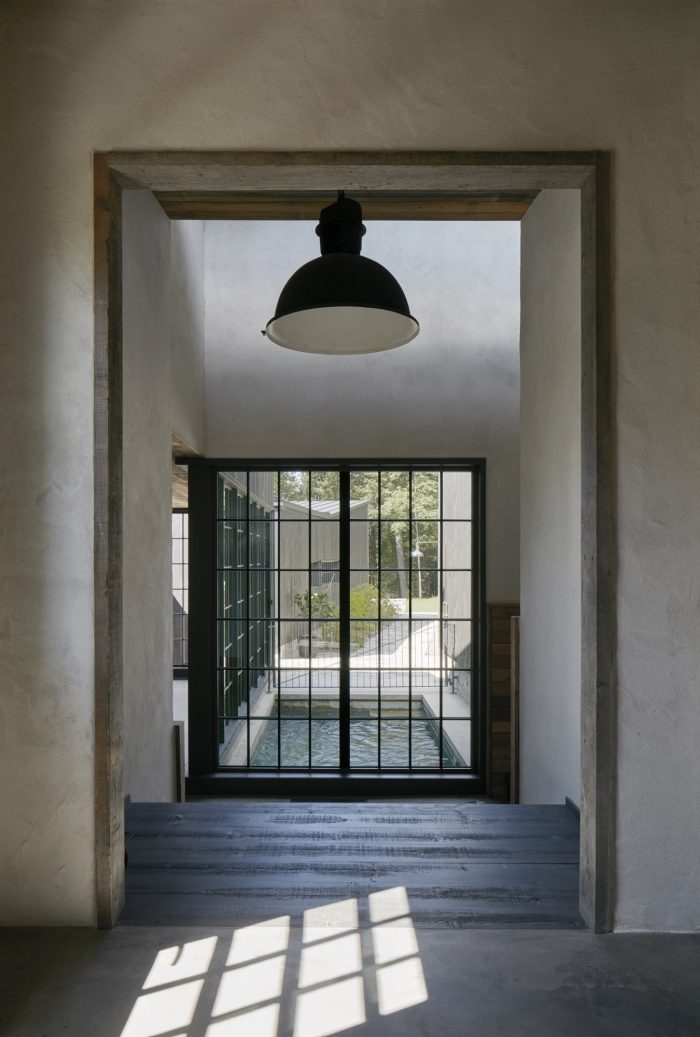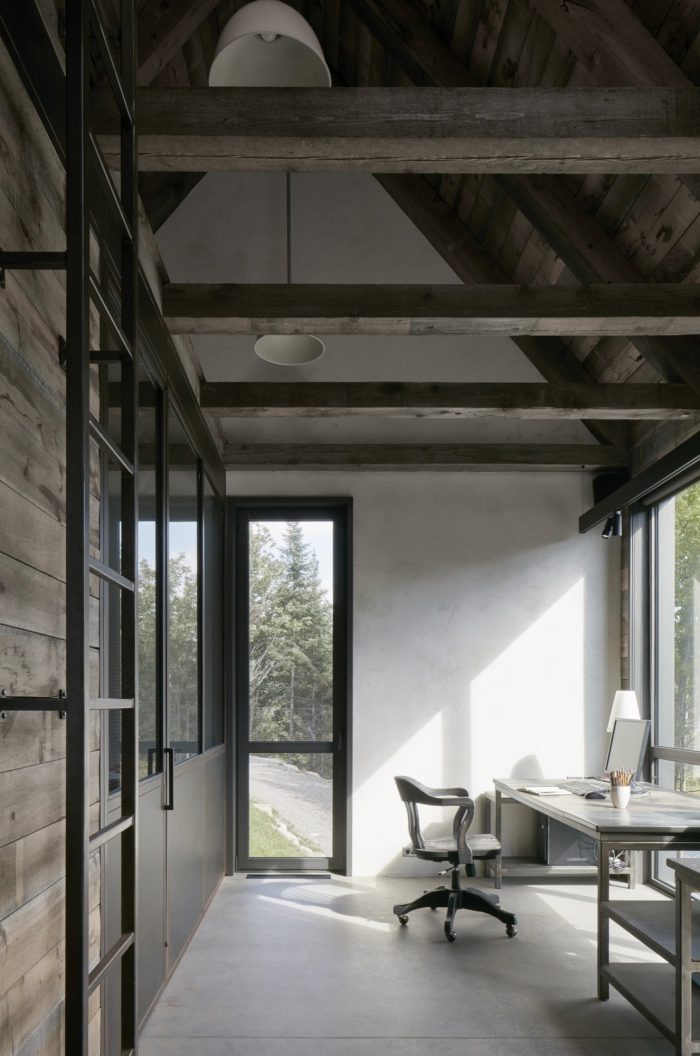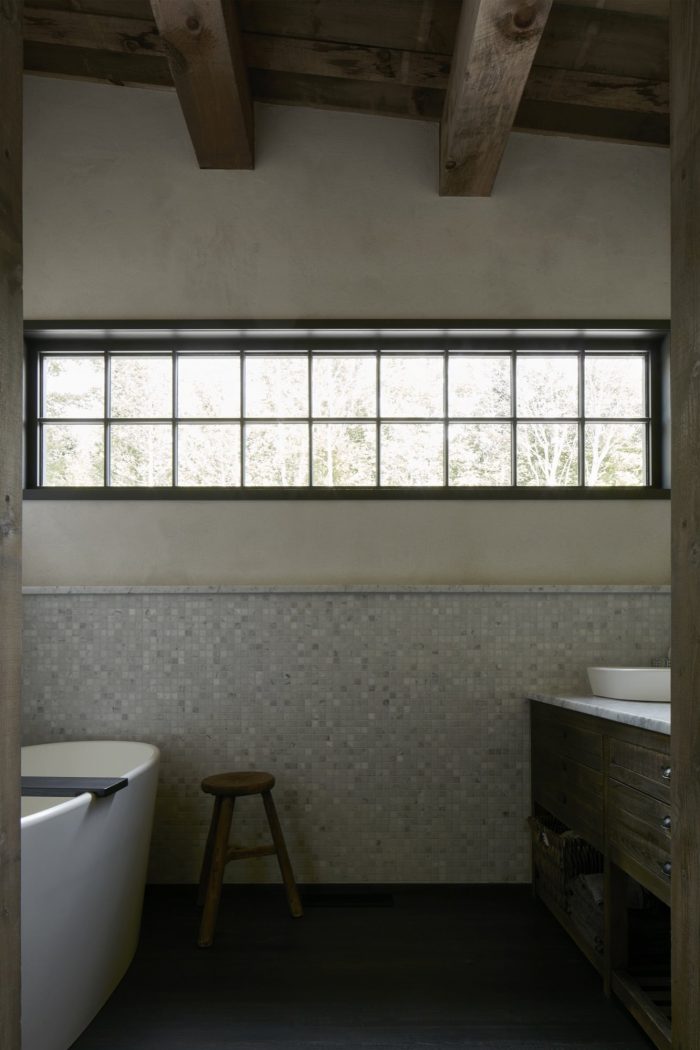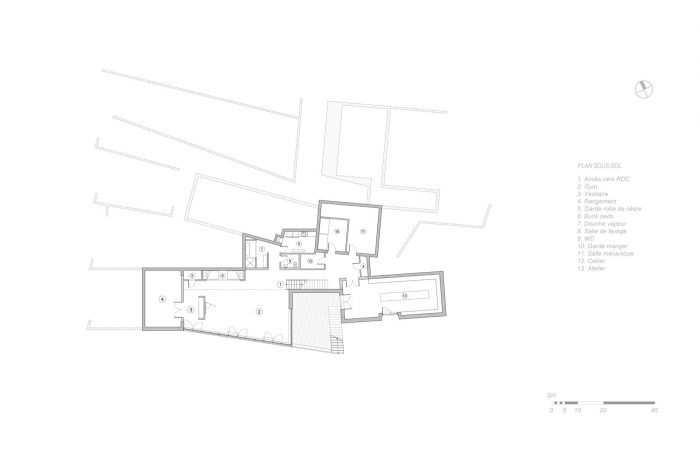这座住宅的入住方案按照有机的规划被分割成四个亭子,释放出一个完全向外看的中央空间。 这个空间有点像 “村庄的心脏”,连接着其他建筑体,在几何学上彼此不同。
This residence’s occupancy program has been fragmented into four pavilions, according to an organic plan, freeing a central space that looks completely outward. A little like the “heart of a village”, this space links the other building bodies, geometrically distinct from each other.
这种建筑构成更多的是来自于场地的特殊地形,而不是来自于正式的预想。因此,场地的缓坡有利于 “分层 “发展,为所有空间提供持续的光线流入。
This architectural composition arises more from the special topography of the site than from a formal preconception. The site’s gentle slope therefore favoured “tiered” development, offering a constant influx of light to all spaces.
最南边的亭子里有客厅,是住宅中更多的社交空间,并向室外大量开放,以便在冬季提供更大的能量增益。该体量是开放的,几乎没有程序性的层次。它基本上结合了与备餐有关的所有方面的功能,使人们聚集在一起:不是一个厨房/客厅/餐厅,而是一个多功能的空间,用于欢快地接待客人。
The most southerly pavilion contains the living room, the more social spaces of the residence, and opens generously to the outdoors so as to offer a greater energy gain during the winter. The volume is open, with very little programmatic hierarchy. It essentially combines the functions related to meal preparation in all the aspects that bring people together: not a kitchen/living room/dining room but rather a versatile space for convivially receiving guests.
其他两翼,更多的是用于睡眠区,为宽大的水空间留出了空间,以便身体放松。其中一翼包括业主的私人区域,而客房则布置在另一翼。干湿两用的桑拿房和大型淋浴器点缀着这些空间,并给房舍带来一种 “生活化 “的外观和感觉。在外面,传统的游泳池已经被一个小的冷水池所取代,它补充了这些亭子的桑拿和蒸汽浴的序列。
The other wings, more dedicated to sleeping areas, leave room for generous water spaces for bodily relaxation. One of these wings includes the owners’ private areas, while the guest rooms are laid out in the other. Dry and wet saunas and big showers punctuate the spaces of these volumes and give the premises a “lived-in” look and feel. Outside, the traditional swimming pool has been replaced with a small coldwater pond that complements the sequence of saunas and steam baths of these pavilions.
最后一个体量,可容纳两层的工作场所,位于远离家庭生活区的地方,被一个保护性的户外空间隔开。这个体量因其有点对称的形式而脱颖而出,它有一个尖顶,位于建筑其他部分的上游,为有时前来办事的访客发挥 “客厢 “的作用。最后,下层容纳了一个工作区,一个维修和动手的车间。
One last volume, accommodating work places on two levels, is located away from the home’s living areas, separated by a protective outdoor space. This volume stands out for its somewhat symmetrical form, with a peaked roof, and is positioned upstream from the rest of the building to play the role of “guest wing” for visitors who sometimes come for business. Finally, the lower floor accommodates a work zone, a maintenance and do-it-yourself workshop.
每个展馆的工艺创造了一个异质的整体,因为设计方法为 “现成的材料”(包括包层和木工)留下了空间,而不是僵化的审美指令。归根结底,这是一个植根于土壤的建筑,以完全不同的 “设计时间 “生产。其形式来自于土壤,但也来自于历史,来自于对 “已经存在 “的材料的耐心寻找。它的有机性指的是我们的农村传统,而不是要求不惜一切代价追求新奇的现代主义典范。
The workmanship of each pavilion creates a heterogeneous whole, in light of the design approach that left room for “found material” (both for cladding and carpentry) instead of a rigid esthetic diktat. Ultimately, this is an earth-rooted architecture, produced with a completely different “design time”. The form emerges from the soil, but also from history, from a patient search for material that is “already there”. Its organic nature refers to our rural traditions rather than modernist canons calling for novelty at any price.
产品说明。这个项目的材料主要是回收的:室内和室外的墙板来自一个废弃的锯木厂,而铺路石则是从一个旧的采石场回收的。房子朝南,允许被动的能量增益,结合地热系统,确保整体的能源效率。
Product Description: This project’s materials were largely recycled: the interior and exterior wall claddings come from an abandoned sawmill, and the paving stones were recovered from an old quarry. The house faces south to allow a passive energy gain which, combined with a geothermal system, ensures overall energy efficiency.
Architects: Alain Carle Architecte
Area : 830 m²
Year : 2015
Photographs :James Brittain
Manufacturers : Alcora, Lalonde et fils, Stone work
Conception Team : Lola Domenech, architect assistant; Christian Aubin, architect assistant; Jean-François Marceau, architect assistant; Isaniel Levesque, architect assistant; Alexandre Lemoyne, architect assistant
Architect In Charge : Alain Carle
City : Wentworth-Nord
Country : Canada


